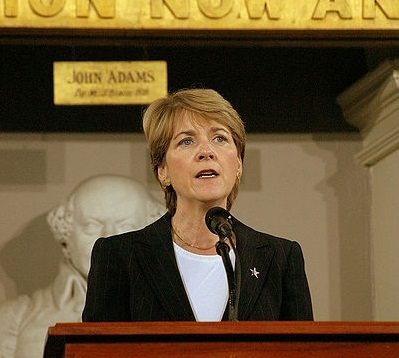
December 19, 2013; Boston Globe
The Boston Globe’s story on Attorney General Martha Coakley’s review of nonprofit compensation says it all: “Nonprofit groups in Massachusetts are paying their chief executives huge amounts of money and giving them lavish perks unavailable to most workers.”
Coakley’s report examined 25 large corporations, typically hospitals, insurers, and colleges, and discovered a pattern of high salaries plus bonuses, deferred compensation, auto allowances, financial planning, life insurance, and, according to the Globe, “other benefits that are more commonly associated with corporate leaders.” Total compensation for some of these nonprofit execs reached as high as $8.8 million between 2009 and 2011.
Coakley’s report contended, “It is not always clear that large compensation benefits packages are actually necessary to attract and retain talent.” That conclusion runs head-on into a theme popping up in nonprofit journals recently that nonprofit executives should be paid like their for-profit counterparts, or at least that their organizations’ nonprofit status shouldn’t mean that they have to accept less than what they think is necessary or what they might deserve.
While not specifying or recommending salary caps, the AG report, according to the Globe, suggested that “nonprofit compensation committees to consider their charitable mission, how the executive pay compares to other workers’ salaries, and take into account the amount of public support the nonprofit receives from its tax-exempt status.” The report also suggested that nonprofit boards reconsider their promises to executives for large severance payments.
But Coakley came to this study after the largest nonprofit health plan in Massachusetts, Blue Cross and Blue Shield, gave two former CEOs large lump sum payouts on their retirement, $16.4 million for William C. Van Faasen in 2006 and $11 million, including a $4.2 million severance payment, for Cleve Killingsworth in 2010.
From the AG’s report, these are the 2011 total compensation numbers for the heads of some of the 25 nonprofits in the study:
|
Fallon Community Health Plan (Hughes) |
$1,029,227 |
|
Harvard Pilgrim Health Care (Schulz) |
$1,460,982 |
|
Tufts Associated HMO (Roosevelt) |
$2,116,683 |
|
Baystate Health (Tolosky) |
$1,636,004 |
|
Beth Israel Deaconess Medical Center (Tabb) |
$360,877 |
|
Boston Medical Center (Walsh) |
$1,378,292 |
|
Brigham’s and Women’s/Faulkner Hospital (Nabel) |
$1,939,479 |
|
Children’s Hospital Corporation (Mandell) |
$1,503,885 |
|
Dana-Farber Cancer Institute (Benz) |
$1,406,432 |
|
Lahey Health System (Grant) Sign up for our free newslettersSubscribe to NPQ's newsletters to have our top stories delivered directly to your inbox. By signing up, you agree to our privacy policy and terms of use, and to receive messages from NPQ and our partners. |
$1,045,479 |
|
Lawrence General Hospital (Anderson) |
$674,042 |
|
Massachusetts General Hospital (Slavin) |
$1,758,659 |
|
Partners Healthcare System (Gottlieb) |
$2,165,199 |
|
Sturdy Memorial Hospital (Shyavitz) |
$1,496,532 |
|
UMass Memorial Health Care (O’Brien) |
$2,350,992 |
|
Boston University (R. Brown) |
$1,382,360 |
|
Brandeis University (Lawrence) |
$760,881 |
|
Harvard University (Faust) |
$899,734 |
|
Massachusetts Institute of Technology (Hockfield) |
$1,129,416 |
|
Northeastern University (Aoun) |
$3,121,864 |
|
Suffolk University (B. Brown) |
$700,060 |
|
Tufts University (Bacow) |
$2,223,753 |
While there are positions for and against high salaries for nonprofit executives, Coakley’s report is going to get a lot of attention, if only because she stands a good change of being elected the next governor of the state. Here are some questions for consideration:
- The largest nonprofits with the highest paid executives tend to be the eds and meds, particularly the meds, including nonprofit insurers. Is it a fair characterization of the nonprofit sector to think of nonprofit CEOs as overpaid when the “evidence,” such as it is, is typically heavy on huge salaries from hospitals and insurers?
- Since so much of the activity of nonprofit hospitals and insurers is often questionable in terms of its “nonprofitness,” might it be appropriate to consider a different 501(c) status for the meds and, consequently, a different regime of accountability review?
- The advocates of higher compensation for nonprofit executives (and fundraisers) often pay scant attention to the abysmal compensation of non-executive nonprofit workers. Isn’t it important for the advocates of higher executive pay to give attention to the AG’s recommendation that there should be “analysis of the relative magnitude of the CEO’s total compensation package in relation to that of the non-executive workforce?”
- What seems to be a potentially major contributor to the gap between executive and non-executive compensation is the practice of “supplemental executive retirement program or ‘SERP’ to supplement retirement benefits available to non-executive employees,” with the implication that these practices put nonprofits at risk and in a way hide true levels of year-to-year compensation. Is this practice something that, regardless of one’s position on compensation, merits greater oversight and regulation?
Twenty-three of the 25 nonprofits in the study used outside compensation consultants to help them set executive salaries. The AG’s report said, “we found little evidence that the process restrained CEO compensation or its growth” and the implication was also that these compensation consultants may not have been all that attentive to the gap between executive and non-executive salaries. Has the process of hiring compensation consultants who presumably know that they are being asked to justify high salaries become next to useless as a mechanism for restraining executive salaries, especially given that nonprofits can look at for-profits for comparables?
This isn’t the first time that Coakley has examined the supposed practice of excessively high compensation in the nonprofit sector, including issues such as paying the trustees of nonprofit insurers. This repeated attention to a practice dominated by a small number of very large nonprofits suggests that her report won’t be the last time someone in public office questions the salaries being paid to nonprofit insurers and nonprofit hospitals.—Rick Cohen











